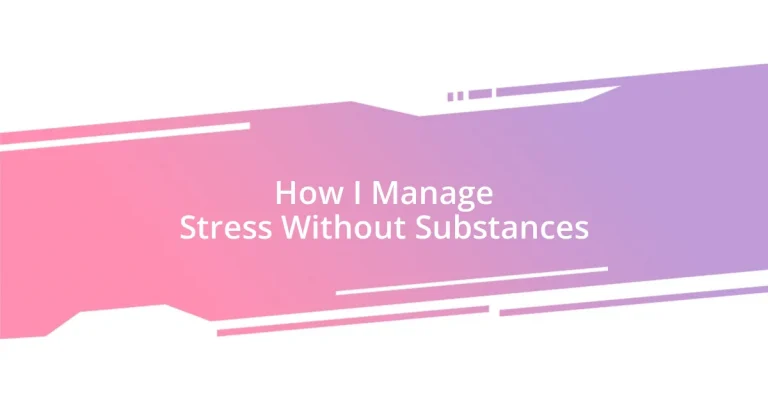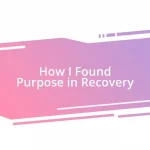Key takeaways:
- Recognizing and identifying personal stress triggers, such as chaotic environments and tight deadlines, is essential for proactive stress management.
- Practicing mindfulness and engaging in regular physical activity significantly reduce stress and improve mental clarity and emotional resilience.
- Building a strong support system and utilizing healthy coping strategies, like journaling and creative outlets, contribute to better emotional well-being and stress relief.
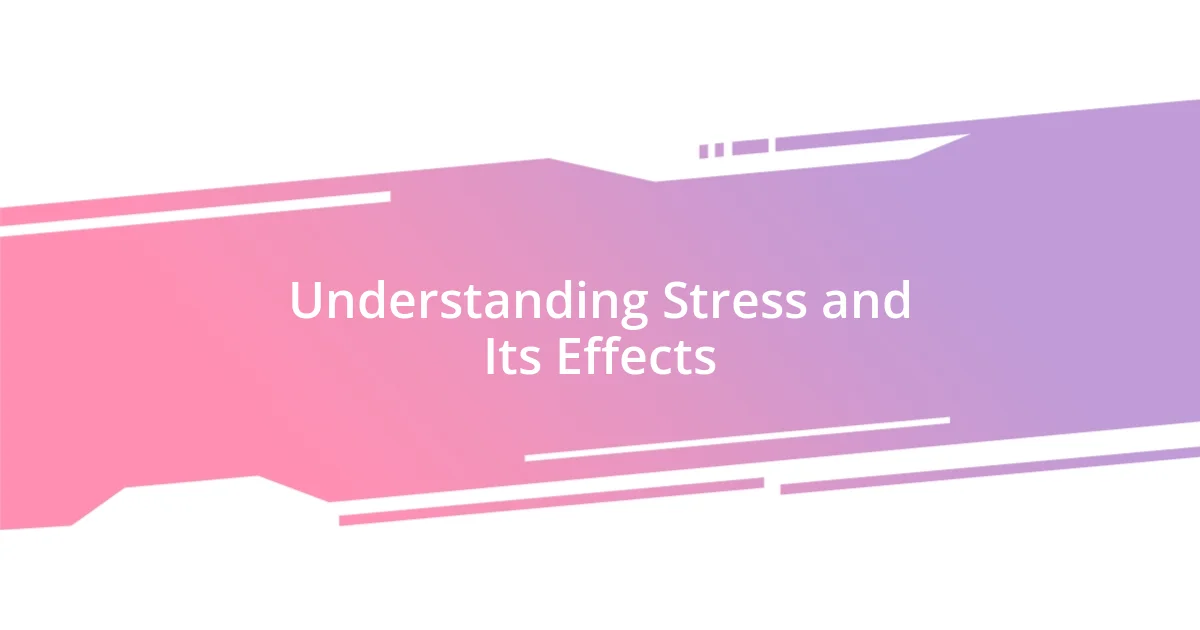
Understanding Stress and Its Effects
Stress, in its essence, is a response to perceived threats, whether real or imagined. I remember a particularly demanding week at work when deadlines loomed like dark clouds, and I felt my heart race with every email notification. It got me thinking: what if stress isn’t just a nuisance, but a signal that something in my life needs attention?
The effects of stress extend beyond fleeting moments of anxiety; they can manifest physically and mentally. For instance, I’ve found that prolonged stress can leave me feeling fatigued and unfocused, making even simple tasks seem daunting. Have you ever noticed how stress can turn your everyday routine into a Herculean effort?
Importantly, the emotional impact of stress can be just as pronounced. I often grapple with feelings of irritability or sadness when life becomes overwhelming. It prompts me to ask myself, what coping mechanisms do I have in place to handle these emotions before they spiral out of control? Recognizing these feelings as part of the stress experience has been crucial for me in finding healthier outlets.
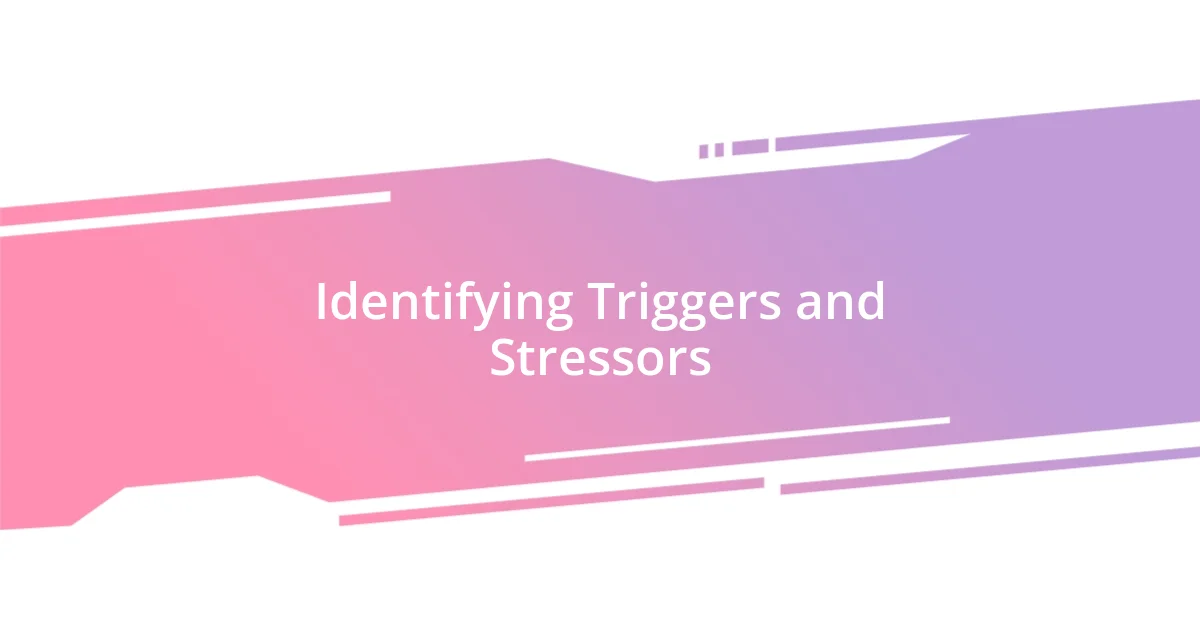
Identifying Triggers and Stressors
Identifying the triggers and stressors in my life has been a gradual journey for me. Initially, I would feel overwhelmed without knowing why, but taking time to reflect really opened my eyes. For example, I discovered that my stress levels spike significantly during hectic mornings. Recognizing that helped me pinpoint the chaos of rushing and managing multiple tasks at once as a significant stressor.
To make it easier for anyone looking to identify their own triggers, I recommend noting down situations that consistently lead to stress. Here’s a simple list to guide you:
- Environment: Is your workspace cluttered or loud?
- People: Are there specific individuals who heighten your stress?
- Tasks: What activities feel like a weight on your shoulders?
- Time: Are tight deadlines a recurring theme that drains your energy?
- Emotions: How do your feelings contribute to your stress levels?
By observing these aspects, I found that I could proactively address those triggers rather than waiting for the stress to engulf me. It’s been empowering to transform reactive habits into more mindful strategies!
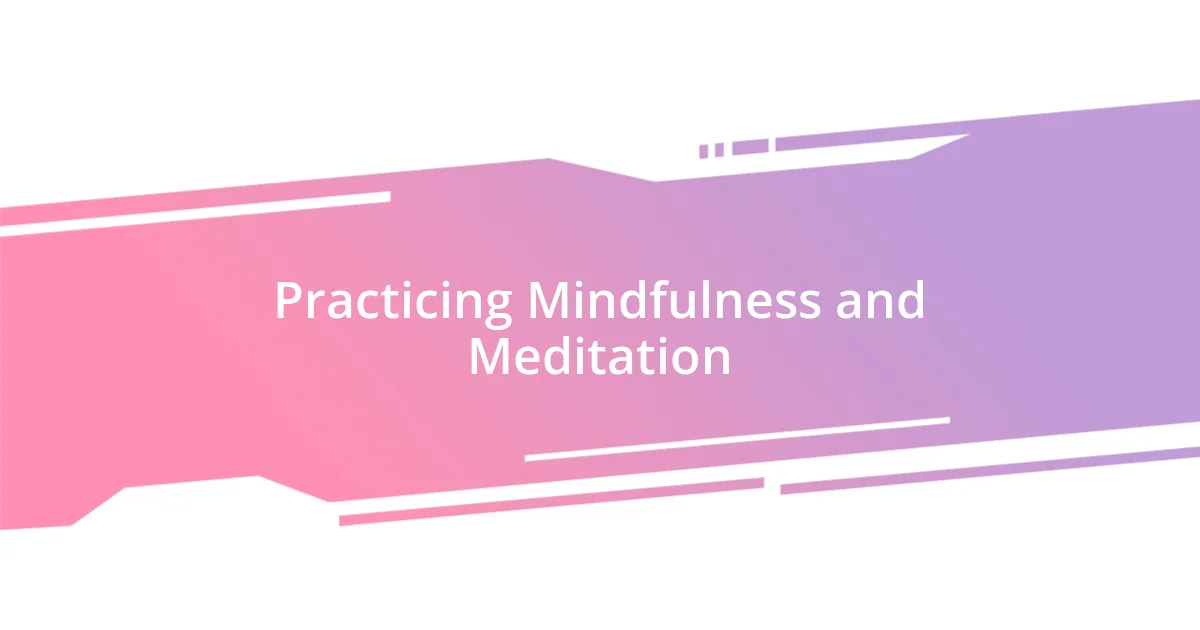
Practicing Mindfulness and Meditation
Practicing mindfulness and meditation has been a game changer in my stress management toolkit. Early on, I was skeptical about sitting in silence, wondering if it would truly help quell the storm of thoughts swirling in my head. But I remember my first guided meditation session vividly—I was surprised at how being present in the moment could ease my racing heart and chaotic mind, almost like a soothing balm on a wound. Have you ever felt that blissful weight lift after just a few minutes of focused breathing?
As I delved deeper, I discovered that practicing mindfulness isn’t just about meditation; it’s about infusing moments of awareness into my daily life. A simple walk outdoors can transform into a meditative experience when I consciously engage with my surroundings, noticing the sound of leaves rustling or the warmth of sunlight on my skin. These small shifts have allowed me to reset my mind throughout the day, providing brief yet impactful breaks from stress.
I’ve found that short, consistent practices yield the best results, and even just five minutes a day can make a world of difference. For instance, I’ve set an intention to pause during my lunch breaks to engage in mindful eating, savoring each bite rather than mindlessly rushing through my meal. This practice not only nourishes my body but also nurtures my mind, creating a calmer space to recharge for the rest of the day.
| Aspect | Mindfulness |
|---|---|
| Main Focus | Being present in the moment |
| Key Techniques | Breathe awareness, body scanning |
| Outcome | Increased awareness and reduced stress |
| Duration | Can be practiced in short bursts (even 5 mins) |
| Recommended Setting | Any calm environment, indoors or outdoors |
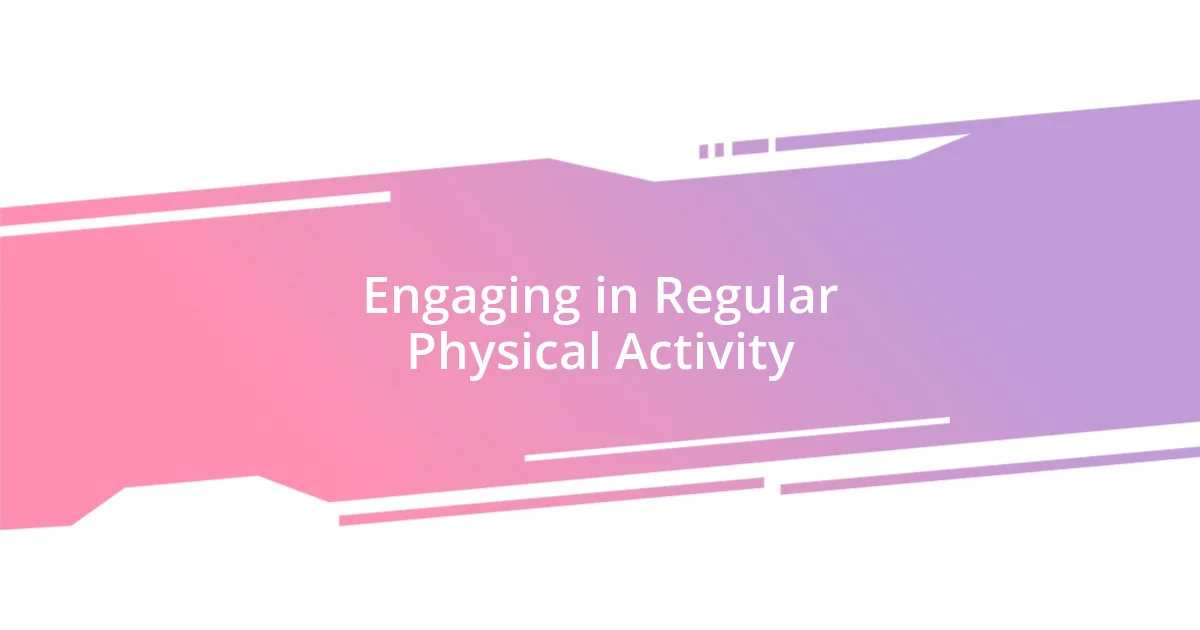
Engaging in Regular Physical Activity
Engaging in regular physical activity has been one of my most effective strategies for managing stress. I still remember the day I decided to join a local running club. At first, I was intimidated by the prospect of sweating it out with seasoned runners. However, I quickly discovered that nothing beat the feeling of hitting the pavement after a long day. The rhythmic cadence of my footsteps seemed to drown out my worries, almost like a reset button for my mind. Have you ever experienced that euphoric release after a good workout?
What I didn’t expect was how much of a positive ripple effect this newfound habit would create in other areas of my life. For instance, on days when I feel particularly stressed, even a brisk 20-minute walk can lift my mood significantly. It’s not just physical; the connection between movement and mental clarity is real. I’ve noticed that days when I prioritize exercise, whether it’s a gym session or a session in my living room, I handle challenges with greater resilience. Isn’t it fascinating how something as simple as movement can so profoundly impact our emotional well-being?
Exercise also fosters a sense of community, which I find invaluable. Participating in group classes or team sports has introduced me to a supportive network of friends who share similar struggles and triumphs. During our time together, we motivate each other and share laughter, which makes the experience so much more enriching. Don’t you think that having a support system can make a substantial difference in how we tackle stress? For me, knowing that I’m part of something bigger adds an extra layer of joy to my physical activity routine.
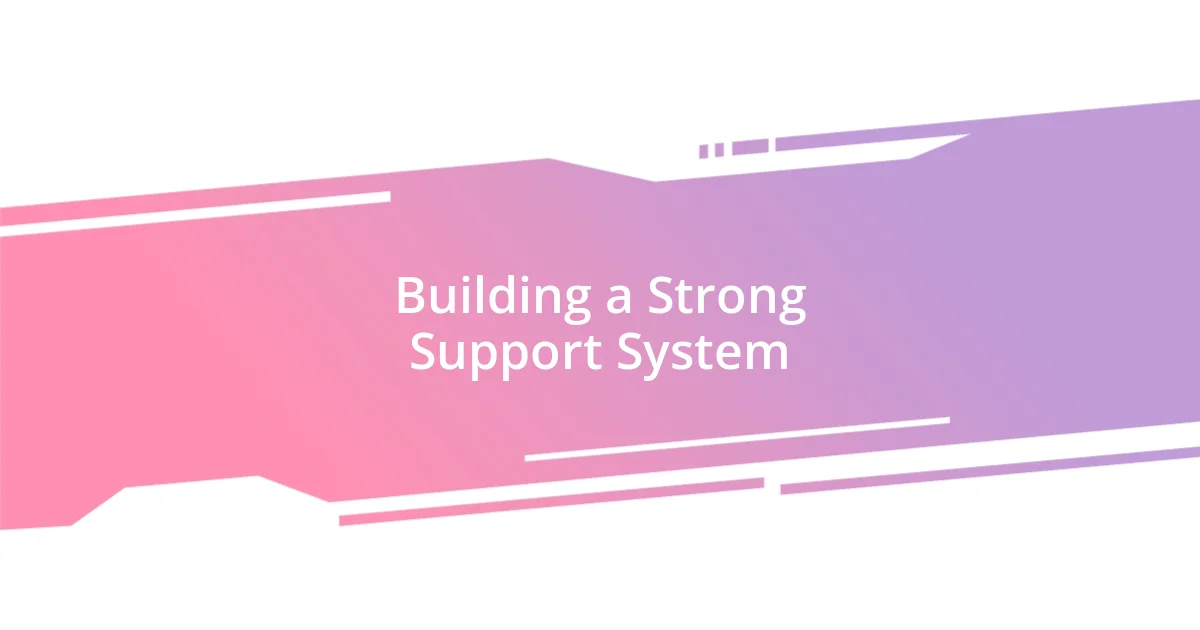
Building a Strong Support System
Building a strong support system has been fundamental in my journey to manage stress. I vividly recall the times when I felt overwhelmed and unsure; reaching out to friends and family often felt daunting. But those moments of vulnerability turned into opportunities for connection, revealing how shared experiences can alleviate burdens. Have you ever felt lighter just by expressing your thoughts to someone who truly listens?
I’ve learned that surrounding myself with positive influences is crucial. For instance, I made a conscious decision to seek out friendships that uplift rather than drain my energy. I remember a particular evening when a friend invited me for a spontaneous coffee. It seemed simple, but that casual chat transformed my entire week. The laughter and camaraderie acted like a balm for my stress. Isn’t it incredible how a few encouraging words can offer such powerful relief?
Moreover, I find that my support system isn’t just about close friends but also about fostering connections with like-minded individuals in group activities. For example, joining a community book club not only expanded my literary horizons but also introduced me to individuals who resonate with my thoughts. The discussions we have often lead to shared insights about stress management, making it feel like we’re all in this together. When was the last time you found solace among a group that understood your struggles? Knowing that others face similar challenges creates a comforting sense of solidarity, reminding me that I am never truly alone in navigating this complex maze of life.
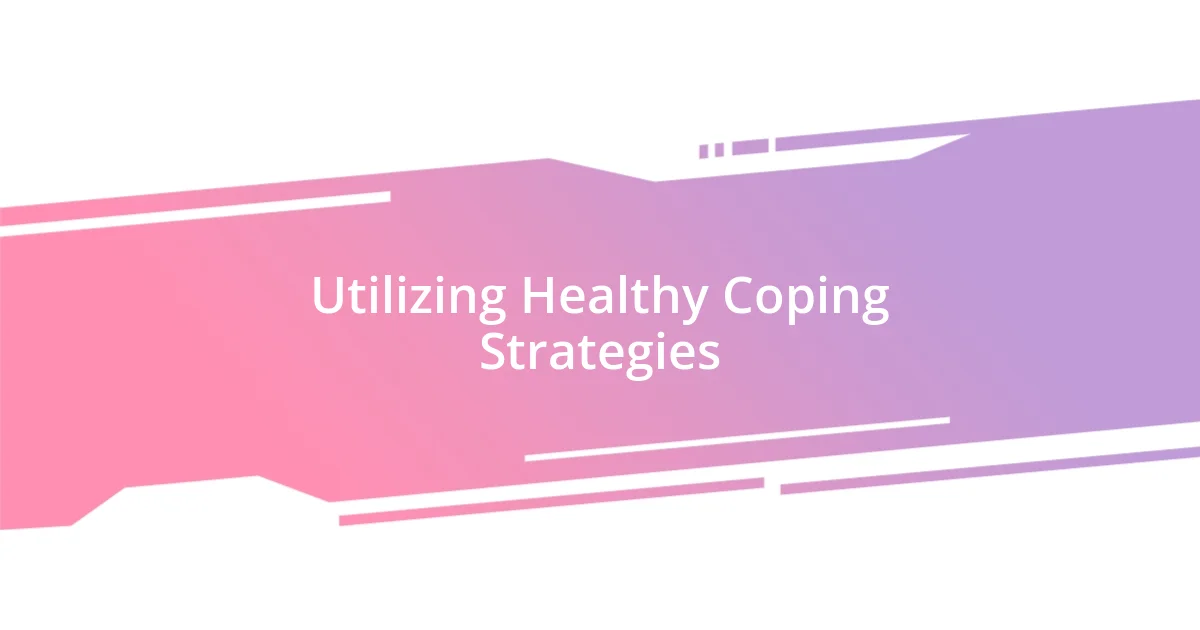
Utilizing Healthy Coping Strategies
Utilizing healthy coping strategies has played a pivotal role in how I manage stress. For instance, I discovered the therapeutic power of journaling during a particularly turbulent period in my life. Each evening, I dedicated a few minutes to pouring my thoughts onto the page, and I was amazed by how this practice not only clarified my emotions but also provided a safe outlet for my frustrations. Have you ever found relief in expressing your feelings in such a tangible way?
Mindfulness meditation has also become a favored tool in my stress management toolbox. I remember the first time I tried it; I felt utterly out of my depth, struggling to quiet my thoughts. However, as I persisted, I found that just a few minutes of focused breathing could transform my anxiety into a sense of calm. It’s like a mini-vacation for my mind! Have you ever taken a moment to simply pause and breathe? It can be remarkably grounding.
I also try to incorporate creative outlets into my routine, which has offered me immense joy. Whether it’s painting, cooking, or diving into a new recipe, I immerse myself in activities that engage my imagination. One weekend, I decided to take up watercolor painting for the first time. While my initial attempts were far from masterpieces, the process was liberating. It reminded me that stress could be countered by creation, not just elimination. What activities make you feel most alive? Finding those moments of bliss is not just a coping strategy; it’s a vital part of my journey toward a more balanced life.
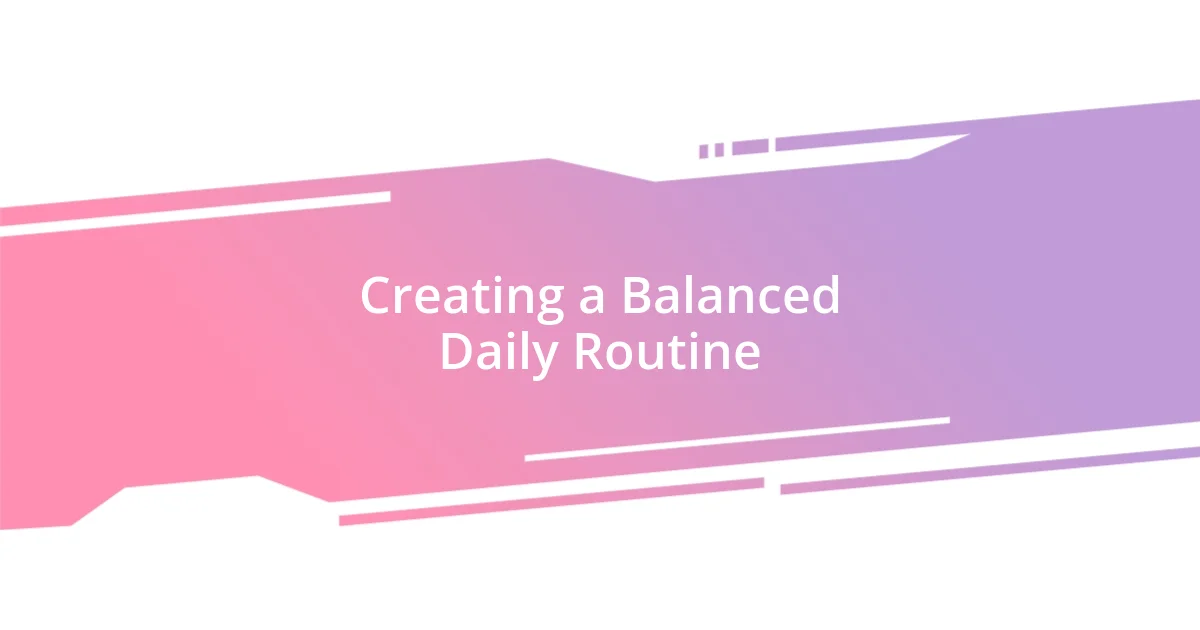
Creating a Balanced Daily Routine
Creating a balanced daily routine has been a game changer for me in managing stress. I recall a time when my days felt chaotic and unstructured, which only added to my anxiety. Then, I started setting specific wake-up and bedtime rituals. Waking up early allows me a precious hour of quiet, where I sip my coffee, plan the day, and, honestly, catch a moment of peace before the world pulls me in every direction. Have you ever tried carving out that stillness for yourself?
Meal planning has also become a cornerstone of my routine. I used to find myself rushing at mealtimes, grabbing whatever was convenient, which always left me feeling depleted. Now, taking a Sunday afternoon to prepare meals for the week has proven transformative. It not only saves time but nourishes my body and mind, allowing me to focus on other tasks without the stress of what to eat. When was the last time you prioritized your health in your daily schedule?
Incorporating short breaks into my day has been surprisingly beneficial too. I often set a timer to remind myself to step away from my desk for a few minutes. During these breaks, I stretch, take a walk, or simply breathe; it’s a mini reset that keeps me energized. I think back to a particularly intense workweek when those brief pauses felt like lifelines. They helped me regain focus and clarity, ultimately fueling my productivity. How do you recharge when your energy starts to wane?












